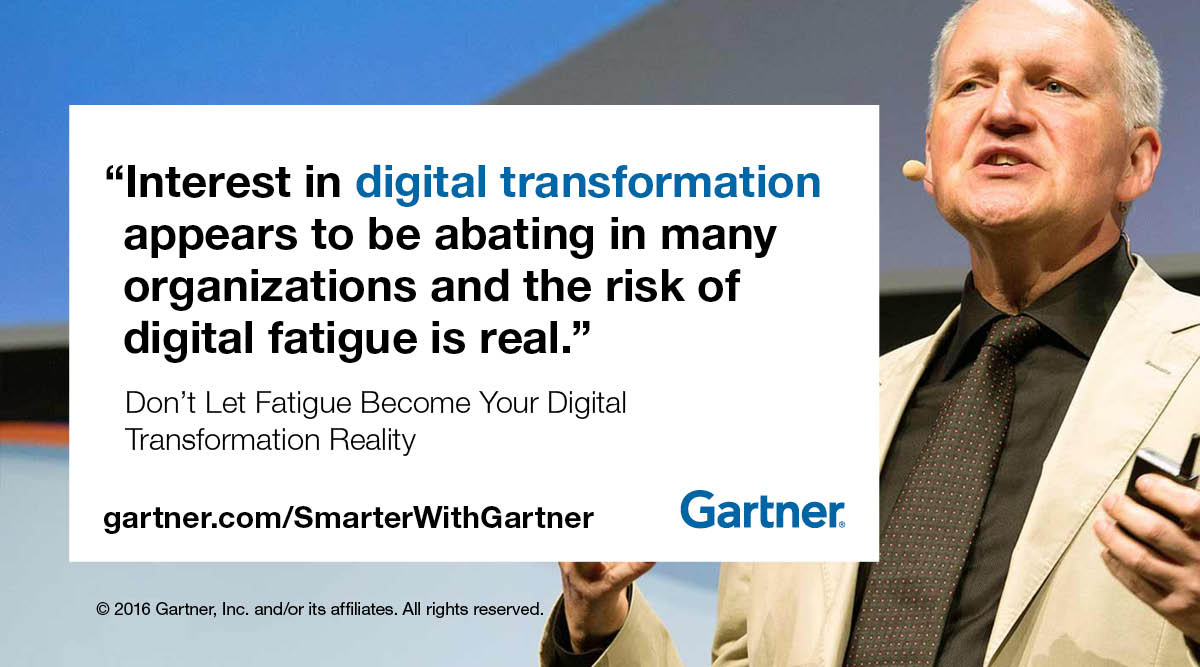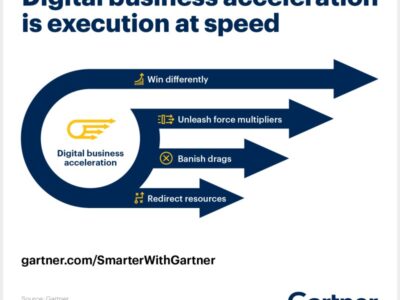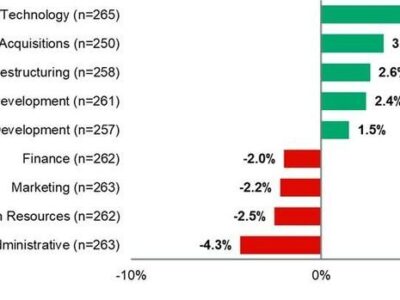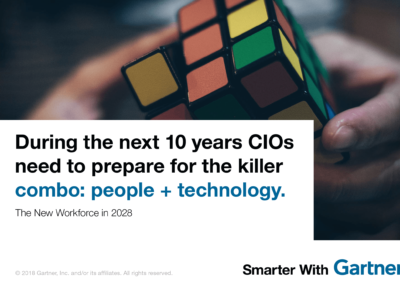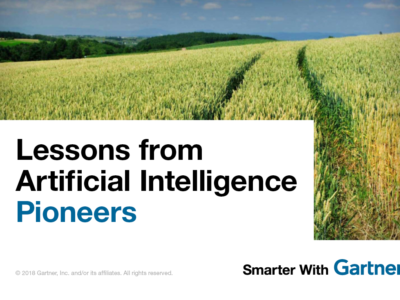Stick with your digital journey to deliver the greatest value to your enterprise.
With technology constantly evolving, your next disrupter or partner could be right around the corner. CIOs need to perceive opportunities and threats that others can’t to succeed. It’s all about seeing the full picture, anticipating the unexpected and seizing opportunities that others miss.
We asked Andy Rowsell-Jones, research vice president at Gartner and conference chair of Gartner Symposium/ITXpo 2016 on the Gold Coast, how CIOs are adapting to digital transformation and the new skills required to deliver the greatest value to their enterprises.
How are organizations progressing along the digital business path?
We are now deeply entrenched in the digital business era, with many enterprises reimagining their business and operating models based on digital capabilities. If you ask CIOs what percentage of their budget they spend on digital, they will universally say it will go up.
While there was an initial flurry of interest around digital, we’re now seeing boards of directors in many organizations becoming distracted by other business priorities. Interest in digital transformation appears to be abating in many organizations, and if anything, the risk of digital fatigue is real.
We are now deeply entrenched in the digital business era, with many enterprises reimagining their business and operating models based on digital capabilities.
Like many industry disruptions, the pundits overestimate the short-term impact and underestimate the long-term impact. Digital transformation is following that pattern. This is the most dangerous time as there’s temptation for organizations to just ignore it and go back to what they were doing before. The effects of digital are now just beginning to be felt, so stick with it – it’s a multi-year journey.
For inspiration, look at companies such as General Electric (GE) in the U.S. that see digital as fundamentally transformational. They’ve shifted their business models from focusing on selling product towards becoming information analytics businesses, where cloud-based analytics and productivity enhancing capabilities are creating non-price competition. As a supplier, it’s about seeking non-price competition and differentiating your product and the ecosystems around it.
What are CIOs most concerned about?
All CIOs have unique goals and challenges around two key areas: aligning to their CEOs’ business priorities and advancing their careers, digital roadmaps and organizational influence.
In a more digitalized organization, CIOs are struggling between two competing pressures: to provide stable, secure, high-performance services and to deliver agile, innovative, technology-intensive services quickly. Bimodal IT provides a way to address both. It involves operating two separate, coherent modes of IT delivery – one focused on stability and the other on agility.
To compete in this digital world, it’s better to be first than better, which means you have to be able to do things quickly.
In contrast to businesses that do it properly, the reliability of those that don’t will go down and costs will go up in the long-term. To compete in this digital world, it’s better to be first than better, which means you have to be able to do things quickly. The people that aren’t doing this well don’t understand the next stage.
What new skills do CIOs need to deliver the greatest value to digitally transformed enterprises?
As the IT environment evolves towards a more business-centric, digitalized model, the idea of the CIO being a technical person is a thing of the past. The old notion that a business strategy drives an IT strategy and the IT strategy enables the business strategy is a virtuous cycle. The IT organization (especially the CIO) must understand a lot more about the market and the customer experience than ever before.
The challenge for CIOs is knowing how to help their people understand the role of IT in the company and build business acumen. This will enable them to combine their technology know-how with a broad understanding of market, industry and customer needs and wants. Then they can apply them in the discovery, design and implementation of digital solutions that create new business value and growth.
Get Smarter
Gartner Event
Mr. Rowsell Jones will be exploring CIO priorities and trends further in his presentation “Signature Series: 2017 CIO agenda” at Gartner Symposium/ITXpo 2016.
Gartner Symposium/ITxpo is the world’s most important gathering of CIOs and other senior IT executives. IT executives rely on these events to gain insight into how their organizations can use IT to overcome business challenges and improve operational efficiency. Follow news and updates from the events on Twitter using #GartnerSYM.
Upcoming dates and locations for Gartner Symposium/ITxpo 2016 include:
September 26-28, Cape Town, South Africa
October 5-7, Tokyo, Japan
October 16-20, Orlando, Florida
October 24-27, Sao Paulo, Brazil
October 24-27, Gold Coast, Australia
November 6-10, Barcelona, Spain
November 15-18, Goa, India

